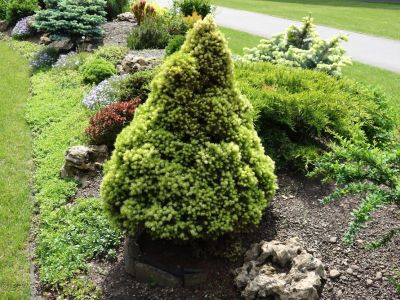About Small Conifer Trees
Conifers come in all sizes, from forest giants to small conifer trees. Coniferous trees that are small come in an amazing array of dwarf conifer varieties. Gardeners love the opportunity to mix and match dwarf conifers for the landscape, creating unique arrangements and eclectic displays in pots, beds, or backyards. Growing dwarf conifer trees is rewarding and easy, but putting together a plan requires time and effort. That’s because dwarf conifer varieties come in a wide range of sizes, textures, colors, and forms. True dwarf conifers grow slower than their full-size relatives and end up much smaller. In general, count on your dwarf to end up 1/20 of the size of the standard tree. For example, the majestic white pine (Pinus strobus) can top 80 feet (24 m.) tall. Dwarf white pine cultivars, on the other hand, only get to 4 feet (1 m.) tall. According to the American Conifer Society, dwarf cultivars grow less than 6 inches (15 cm.) a year. And, at the age of 10, a dwarf tree still won’t be taller than 6 feet (2 m.).
Differences Among Dwarf Conifer Varieties
Don’t think of dwarf conifers as miniature Christmas trees, as many dwarf conifers have irregular or spreading growth habits that are surprising and pleasing in a garden setting. In small conifer trees, texture means leaf size and shape. The thinner the leaves, the more delicate the texture. Dwarf conifer varieties may have needle, awl, or scale-shaped leaves. The leaf color in conifer selections ranges from different shades of green to blue-green, blue, purple, and golden-yellow. Some needles change from one color to another as the small conifer trees mature. When you decide to start growing dwarf conifer trees, don’t forget to take advantage of all of the different forms and shapes of conifer trees that are small. You’ll find trees with oval shapes, conical, globose, and columnar. You can also find dwarf conifer varieties that are narrow upright, mounding, prostrate, spreading, and cushion.
